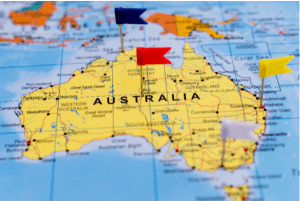The data in the 2016 census confirms trends we already know about: the population is growing strongly, fewer people own their homes, more people are renting, and household size is shrinking.

The 2016 Census provides hard data that illuminates many of the factors that have been driving the property market in recent years: the population is growing strongly, home ownership is down, more people are living in apartments and renting, and household size is shrinking.
We take a look at the census data most pertinent to the property sector.
Population growth is strong
Australia’s population grew 8.8 per cent in the years between the 2011 and 2016 censuses, reaching 23,401,892. It’s no wonder we are seeing pressure on housing and infrastructure.
Melbourne is growing more quickly than Sydney
Melbourne added 1,859 people per week between the 2001 and 2016 censuses, compared with Sydney, which added only 1,656 people per week. Sydney remains the largest city, with a population of 4.8 million, but Melbourne is not far behind with a population of 4.5 million.
The Sydney and Melbourne markets are undersupplied
The number of people living in each dwelling in Sydney and Melbourne has increased to 2.7 people, compared with 2.6 nationally. The number of households in Sydney with six or more people has increased by 20 per cent since 2011. Tim Reardon, HIA’s Principal Economist, says this shows the Sydney and Melbourne property markets are undersupplied.
Cities are growing more quickly than regional areas
Between the 2011 and 2016 censuses, the number of people living in capital cities grew 10.5 per cent, almost double the 5.7 per cent growth rate for people living outside capital cities.
There was a big decline in the number of homes owned outright
In 2016, 31 per cent of homes were owned outright, a significant decline from the 41.1 per cent of homes owned outright in 1991.
But the number of households with mortgages is on the rise
But a greater percentage of households were owned with a mortgage. In 2016, 34.5 per cent of homes were owned with a mortgage, compared with 27.5 per cent in 1991.
Renting is on the rise
In 2016, 30.9 per cent of households were renting, up from 26.9 per cent in 1991.
Fewer people are living in houses, more are living in flats
In 2016, 73 per cent of dwellings were houses, compared with 76 per cent in 2011. Semis, terraces, townhouses, and apartments accounted for 26 per cent of dwellings, with 12.7 per cent of households in semis or terrace houses, and 13.1 per cent in flats.
The population is aging
The median age of all Australians increased slightly from 37 years in the 2006 census, to 38 years in 2016.
In 2016, 16 per cent of the population was aged over 65 years, compared with 14 per cent in 2011.
Households are getting smaller
The census counted increases in the numbers of no-children families, single-parent families, and single-occupant households – showing the number of occupants in households is shrinking.
In 2016, one in five households (24.4 per cent) were occupied by a lone person, up from one in four (20 per cent) in 1991.
The average person per household was 2.6, down from 2.8 in 1991.
The rise of the no-children family
The census showed there were 6.1 million families in 2016.
In 1991, 51 per cent of families were couples with children, dropping to only 45 per cent in 2016.
In 1991, 32 per cent of families were a couple with no children. In 2016, 38 per cent of families were couples with no children.
Single-parent families are more common
Single parent families accounted for 13 per cent of all families in 1991, a figure that jumped to 16 per cent in 2016.
Almost one million – 900,000 – single-parent families were counted in the 2016 census, and more than 80 per cent of the single parents were female (81.8 per cent).
Source: 28/06/2017 THE Real Estate Conversation, The Economy https://www.therealestateconversation.com.au/news/2017/06/28/2016-census-what-does-it-tell-us-about-housing-australia/1498602489



